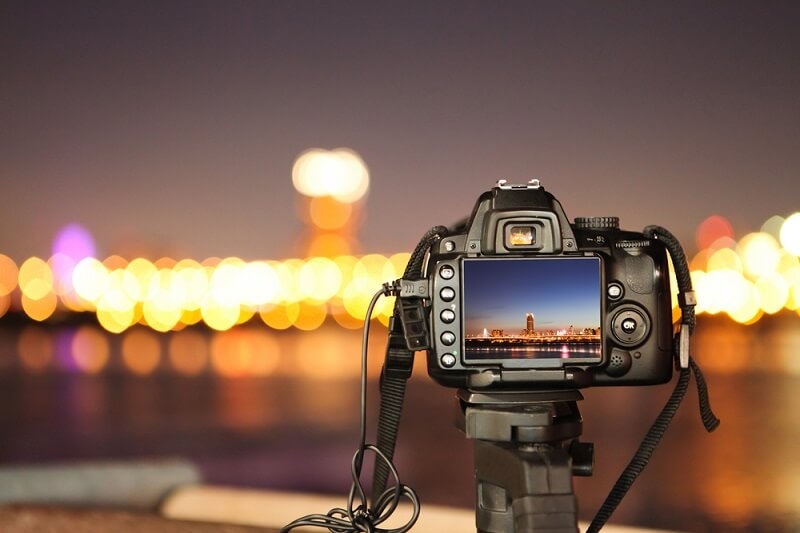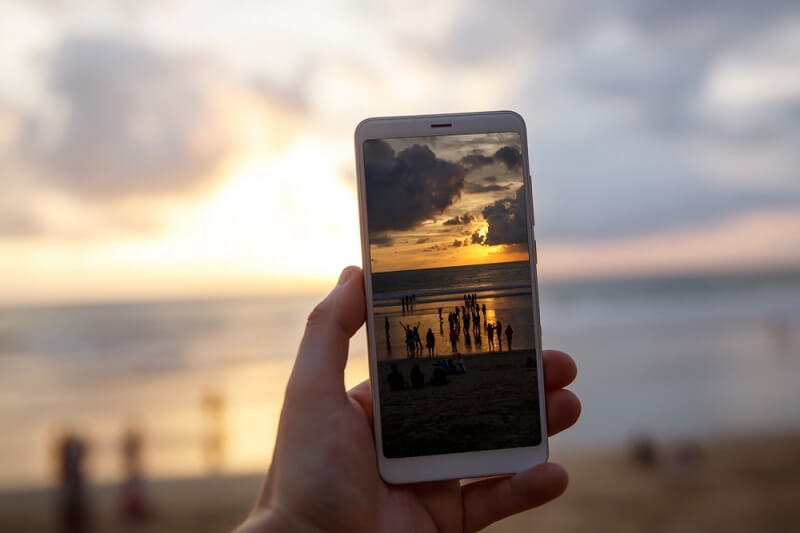Master Natural Light Photography to Instantly Improve Shots

Utilizing the natural light of soft light can enhance your images and give them a colorful, professional, and distinct look without artificial lighting. Knowing how to use natural light in photos, and at what time of day will give you the best shots, is essential for capturing images. Understanding daylight vs shady photos, and applying some natural light everyday photography tips can give you stunning visuals. This natural light photography guide will provide step-by-step methods, covering the potential for both new and experienced photographers to use natural light to its fullest potential.
Why Natural Light Photography Is Important?
Light makes photos, and learning natural light photography is one of the keys to creating great images. Unlike artificial lights, sunlight offers dynamic range, rich shade, and real shadows that convey intensity and realism to images. Understanding how light interacts with subjects can dramatically enhance compositions and reduce the need for heavy post-processing. For novices, mastering the nuances of using herbal medicine in pics hastens ability improvement and permits modern freedom.
Understanding How to Use Natural Light in Photos
Understanding how to utilize natural light in photography includes paying attention to the light's direction, quality, and modifiers.
- Direction: Front lighting brightens the subject. Side lighting leaves texture. Backlighting creates silhouettes or rim lighting.
- Quality: Soft light during dawn and sunset (golden hour) is ideal for reducing shadows, but knowing when to use the right light and tone is essential.
- Modifiers: reflectors and diffusers help control light, flatten highlights, or reduce overexposure.
With this brief overview of these considerations, you can consistently create fantastic, sharp, properly exposed imagery without relying on flash or studio lighting.
Best Time of Day for Photography

When you shoot, natural light will affect the quality of your imagery. You should understand what time of day is best to shoot so you can adjust your framing to accommodate the best light:
- Golden Hour: This is the period just after sunrise or before sunset. It provides gentle warm light suitable for portraits or landscapes.
- Blue Hour: This is the period just before sunrise or after sunset, and the light is cool and diffuse.
- Midday sun: The midday sun is bright and harsh, secondary to its placement in the sky, which provides dramatic shadows, but it should be used cautiously.
Understanding when to shoot natural light will help assure consistent results and reduce the need for post-processing to make your imagery viable.
Sunlight vs Shade Photography
Mastering sunlight vs coloration images is fundamental to controlling publicity and temper:
Sunlight Photography
- Produces colorful shades and robust assessment.
- Functions well for outdoor portraiture and panoramic showcases.
- Carefully positioned for blown highlights.
Shade photography.
- Provides soft, even lighting and lightens harsh shadows.
- Best for macro photographs and capturing real textures.
- Provides diffusing, balanced tones for portrait pictures.
It is beneficial for photographers to learn to balance daylight hours and shade so that temperatures can be managed and stories can be set quickly.
Advice on Lighting for Beginners
Advice on lighting apparatus can help find out initial assessments and overall photographs:
- Watch Light Direction: See how daylight interacts with objects and surfaces.
- Utilize Reflectors: The light bounces mildly into some shaded zones to get additional balanced photographs.
- Watch the Backgrounds: Watch without clothing for additional ideal photographs.
- Change Your Angles: With the seat position relative to the mould, consider emergent compositions.
Using one plan builds self-assurance that forces your awareness of essential herbal conditions photographs.
Outdoor Photo Lighting Guide
Recommended lighting ideas and novice photographers, rather than a few photographs, allow photographers to rationalize other external information topically.
- Open Shading is soft lighting with little to no apparent dark staining, which is pleasant or appropriate for photography.
- Back-lighting: Place the sun behind a subject, which creates rim-lit effects while developing silhouettes.
- Cloudy Conditions: Light-diffused sunlight produces exposure, creating the preceding mild shadows.
- Oriented Lighting: Photographically orient the camera to initialise the light from the sun to build textures and talent.
Using one plan will continue to manufacture outside durations, producing the practitioner even expert-quality images.
Camera Settings for Natural Light Photography
The right digital camera settings are important to getting the maximum out of natural light pictures:
- ISO: Low ISO (100–400) decreases grain.
- Aperture: Wide apertures (f/1.Eight–f/four) for portraits; narrow apertures (f/8–f/16) for landscapes.
- Shutter Speed: Fix shutter speed to avoid motion blur while ensuring proper exposure.
- White Balance: Ensure colors reflect the conditions of the light.
Knowing these specifications allows for more creativity and consistent technical reproduction in your work.
Using Reflectors and Diffusers
Reflectors and diffusers are. Essential gear for controlling herbal diffusion:
- Reflectors: soak up sunlight hours to melt shadows or highlight competencies.
- Diffusers: soften harsh sunlight to decrease evaluation.
- Portability: Reflectors and diffusers are lightweight and compact, making them excellent equipment for outdoor shoots.
Novice photographers can beautify their pics by using easy yet powerful equipment.
Golden Hour Techniques
Golden hour offers warm, easy lighting perfect for each photo and landscape:
- Position the concern to make use of side-lighting fixtures for intensity.
- Use reflectors to fill in shadows subtly.
- Experiment with backlighting to offer ethereal rim outcomes.
Mastering golden hour lighting fixtures is key to advancing your natural moderate images competencies.
Blue Hour and Low Light Photography
Blue hour creates cooler, balanced tones:
- Low mild reduces harsh shadows and creates dreamy moods.
- Tripods are advocated for holding sharp snapshots at slower shutter speeds.
- Reflectors and subtle artificial light can supplement blue hour conditions.
Learning to shoot efficiently in low-moderate conditions expands innovative possibilities.
In-depth Comparison of Sunlight vs Shade Photography
Let's understand the daylight versus color photographs:
- Direct Sunlight: Direct light produces bold contrast and intense colors, which are great for strong compositions.
- Shade: Shade yields gentle, even tones valuable for element photographs and macro work.
- Edge Areas: The Edge of shade areas assists you in mixing each factor to acquire subtle gradations throughout the distance.
Experimenting with those situations can help evolve versatility and ability.
Advanced Beginner Lighting Tips
Once you're comfortable with simple beginner lighting tips, increase to more advanced strategies:
- Layered Light: Combine daytime with reflectors or small artificial assets to control dynamic depth.
- Shadow Play: Use patterns or fabric in daytime to acquire the creative intensity of the field and rationale.
- Directional Focus: Emphasize shape and shape greater strategically, allowing light motion to accentuate.
Utilizing the one strategy pushes an expert's eye for composition and proximity control.
Portrait Photography with Natural Lighting
Natural lighting is advantageous in portrait photography for a variety of specific reasons:
- Place subjects in soft, diffused lighting for complementary skin tones to portraits.
- Use open shade or golden hour for the best claro lights on faces.
- Backlighting separates individuals from the background and adds richness and depth.
- Combine all of these amateur lighting tips with reflectors for the best results.
With careful management, herbal moderate images could make snapshots appear extra professional and expressive.
Landscape Photography Techniques
Light defines landscapes as a whole due to the terrain:
- Early morning or overdue night gives rich, heat highlights.
- Cloudy skies act as herbal diffusers for even exposure.
- Directional sunlight accentuates textures and features.
- Use sunlight hours vs coloration photos to emphasize depth and dimension.
Understanding natural light transforms regular landscapes into dramatic, visually enticing images.
Resolving Common Lighting Issues
Problems arise despite careful planning:
- Overexposed highlights: use ND filters or adjust your exposure settings.
- Deep shadows: Use a diffuser or a reflector to soften the contrast.
- Uneven texture or skin tone: move the light or adjust the white balance to bring it all together.
Being prepared to solve problems ensures a professional-quality photo in various situations.
Conclusion
Mastering herbal mild images transforms everyday snapshots into professional, perfect pix. By applying a method to apply herbal light in snapshots, using amateur light suggestions, and following an outdoor picture lighting manual, photographers can harness daylight and colour to create visually appealing compositions. Consistent workout, statement, and thoughtful moderate manipulation are the keys to immediate development.
This content was created by AI

